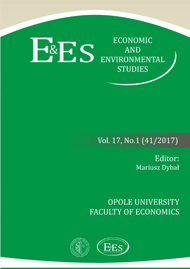The Economic and Financial Situation of General Pension Societies (PTE) in the Years 2002 – 2015 (Selected Aspects)
The Economic and Financial Situation of General Pension Societies (PTE) in the Years 2002 – 2015 (Selected Aspects)
Author(s): Urszula Banaszczak-SorokaContributor(s): Mariusz Dybał (Editor)
Subject(s): Economy, Public Finances, Socio-Economic Research
Published by: Uniwersytet Opolski
Keywords: revenues of general pension societies (PTE); cost PTE; Profit and profitability PTE
Summary/Abstract: In 1999, 21 financial institutions possessed a permit to establish general pension societies (PTE). At the end of the 2015 12 PTE manage close to 140 billion collected in open pension funds. In the researched period, the legal solutions concerning revenues and costs of general pension societies underwent multiple modifications, affecting their economic and financial situation. The changes in revenues and costs had their impact on the profit earned by the general pension societies and their profitability. Regardless of the legal changes (sometimes very radical) general pension societies did not suffer any losses during the considered period. On the contrary, even when Open Pension Funds (OPF) generated losses associated with the crisis, the second pillar accumulated profit. During their prowess (1999 - 2015) general pension societies generated a profit of 7.7 billion zl. In total, there was paid over 7 billion zl in dividends. Shareholders could not have objections to the profitability either, because it was measured by a number of indicators and it was more interesting than in other sectors of the economy. The profitability of the core business took on size from 21.4 to 61%, and ROA and ROE often exceeded 20%.
Journal: Economic and Environmental Studies
- Issue Year: 17/2017
- Issue No: 1 (41)
- Page Range: 11-24
- Page Count: 14
- Language: English

